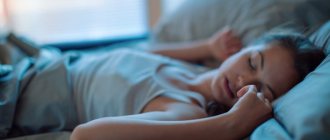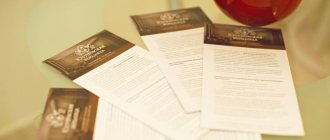Biological meaning of fear
In order to penetrate deeper into the essence of such a phenomenon as a phobia, we need to understand what fear is and why we need it.
Fear is an emotion that is caused by the instinct of self-preservation. We need it in order to be able to recognize a real threat to our lives. That is, fear is an emotion that is objectified by something specific that can cause specific damage to a person’s life, health or well-being.
And from a situation in which we experience fear, there are two main ways out: fight or flight.
For example, an angry dog barks at us and because of this we feel fear. If the dog is small, then we can shout to it: “Get out of here!” or even emotionally kick her aside. She will whine and run away. This is the “fight” reaction. And if this is an impressively sized dog, such as a shepherd or a Rottweiler, then we will begin to back away in fear, trying to find some kind of fence with a gate to isolate ourselves from the evil dog. This is the “flight” response.
But let's consider another situation in which the same Rottweiler or Shepherd does not pay attention to us, since the owner is walking them, clutching a leash in a strong hand. And at the same time the dog is wearing a muzzle. Will we experience fear in this situation? I think that most sensible people will not experience fear. And why? Because in this situation there is no threat to life. The situation is under control.
But if a person has a phobic fear of dogs, he will experience fear even in a situation where the dog is on a leash and muzzle.
If we ask him why he feels fear when the dog cannot attack him, he will say: “After all, it can twitch and snatch the leash from the owner’s hands, attack us and tear us up with its claws, or somehow throw off the muzzle and bite us. Who knows what to expect from dogs, they are animals after all!”
It becomes clear that fear is something rational, and phobic fear is something that cannot be rationally explained. After all, if you think about it, anything in the world at any moment in time can go wrong as planned and thereby cause harm to anyone. But nevertheless, this person we are considering is afraid of being injured by a dog. Most people do not constantly think about what might threaten them in this world, since such anxiety would prevent them from functioning effectively in society: going to work, performing everyday activities, taking care of their family and home. You can’t foresee everything, and therefore there will always be an element of unpredictability in a person’s life.
We present to your attention a complete list of existing phobias:
A
Ablutophobia is a fear of swimming, water and water procedures.
Aviation phobia is fear, panic and terror of flying on any air transport.
Hagiophobia is the fear that arises at the sight of sacred objects and priests.
Agyrophobia is a panic fear that occurs while crossing a road or street.
Agoraphobia is anxiety and panic while being in open areas and in open spaces.
Agrizoophobia is a panicky fear of wild animals.
Adentophobia is a fear that arises from the sight of human and animal teeth.
Ailurophobia is a panicky fear of representatives of the cat family.
Aichmophobia is fear of seeing or interacting with piercing or cutting objects.
Acarophobia – fear of insects and ticks.
Aquaphobia – fear of bathing and swimming.
Acribophobia is a state of horror and panic that occurs in a person when he thinks that he will not be able to understand the text he is reading.
Acrophobia – fear of heights.
Acousticophobia is the fear of loud sounds.
Algophobia, alginophobia - panicky fear of experiencing pain.
Alexiaphobia is a person's fear of losing the ability to read or speak.
Alektorophobia – fear of chickens.
Allodoxaphobia is an obsessive and painful fear of the opinions of strangers.
Albuminurophobia is the fear of getting pyelonephritis.
Amaxophobia is an unreasonable fear of traveling by car or any other vehicle.
Amatophobia – fear of dust.
Ambulophobia is an uncontrollable fear of walking without support.
Amychophobia is the fear of damaging the skin.
Amnesiphobia is the fear of losing memory.
Anablepophobia is the fear of looking up.
Anginophobia – fear of an angina attack, fear of suffocation.
Anglophobia is the rejection of the English language and everything connected with England.
Angrophobia is an unreasonable fear of one's own or another's anger.
Androphobia is a panic that occurs at the sight of men.
Anemophobia – fear of wind and drafts.
Ankylophobia is the fear of being paralyzed or immobilized.
Anti-Semitism is hostility, discrimination, cruel treatment of Jews based on their nationality.
Antlophobia is an uncontrollable fear of surviving a flood.
Anthophobia is a fear that occurs when seeing flowers.
Anthropophobia is a neurotic fear of seeing people and interacting with them, a forced need to avoid society.
Apeirophobia is an obsessive fear of infinity.
Apiphobia is a horror that occurs at the sight of wasps or bees.
Aplyumophobia is an anxiety condition that occurs in a person when they see garlic.
Apopatophobia is the fear of seeing toilets or the fear of entering this room.
Arachnophobia is a panicky fear of spiders.
Arrhythmophobia is the fear of numbers, numbers and number combinations.
Arsonphobia is a panic fear that occurs at the sight of fire or fire.
Asinuphobia is an obsessive fear of seeing or interacting with donkeys.
Asymmetryphobia is an uncontrollable fear of symmetrical objects, with their symmetrical arrangement, an obsessive fear of putting things in order.
Asthenophobia is the fear of being weak, of experiencing a loss of strength.
Astrapophobia – fear of lightning.
Astrophobia is a state of panic that occurs at the sight of a starry sky.
Atazagoraphobia is a person's fear that they may be forgotten or ignored.
Atelophobia is a severe anxiety that arises from a person’s fear of being imperfect or not being good enough for others.
Atephobia is a panic fear that occurs at the sight of old buildings and destroyed structures.
Atychiphobia is the fear of experiencing failure.
Atomosophobia is the fear that a nuclear explosion will occur.
Aulophobia is a persistent intolerance and fear of flute sounds.
Auroraphobia is a panic that occurs in a person at the sight of the northern lights.
Aurophobia is an unreasonable fear that arises at the sight of gold.
Automysophobia is the horror that a person experiences when people spread unpleasant odors (sweat, feces, intestinal gases, etc.). This greatly complicates his communication and social contacts with other people.
Autophobia or (isolophobia, eremophobia, monophobia) – fear of being alone, fear of loneliness.
Aphenphosmophobia is the fear of being touched by strangers.
Aphobophobia is a person’s awareness that he does not have phobias.
Acluophobia is an obsessive fear of the dark.
Acerophobia is a baseless fear of everything sour.
Aeroacrophobia is a strong fear of open, high places.
Alarm level
We come to another important concept - anxiety . Anxiety plays a key role in phobic disorders.
If fear is an emotion that concerns a specific threat to life, then anxiety arises when, in fact, there is nothing to be afraid of. Anxiety, to put it simply, is unformed fear. A person is afraid of something, but what exactly is unknown. He seems to be in anticipation that something will happen soon that could cause him harm. But whether this will actually happen or will never happen is unknown.
Anxiety levels may be normal, elevated, or decreased. We will focus primarily on the first two types.
Normal level of anxiety
Anxiety, in itself, like fear, has a useful function that protects a person. If a person does not feel anxiety at all, then he will not be able to soberly assess his capabilities. He will be careless and will constantly run into trouble. Anxiety helps us anticipate situations in which we might experience fear. In other words, anxiety is our caution and prudence. A moderately cautious person can achieve a lot. A careless person will constantly find troubles on his head and will not have the internal resource to get out of them, since this will require forethought, which he does not possess. A person who is overly cautious will, on the contrary, be overly afraid of everything.
Increased level of anxiety
This type of anxiety is characterized by the fact that a person expects danger everywhere. He is constantly afraid, but does not know what. Such a person is inclined to draw conclusions based on a single case. For example, a person got stuck in an elevator and after that began to ride them less often. Then, after a while, he got stuck again and after that he saw on the news how an elevator cable broke in some house in his city, as a result of which people died in the fallen elevator.
Such a sequence of events may be sufficient to form a phobia, provided that the person initially had a high level of anxiety.
For a person with a normal level of anxiety, in order to form a stable avoidance of something, more extensive statistics must accumulate.
Formation of a high level of anxiety
As can be seen from the previous chapter, a high level of anxiety is required to form a phobia. But how does it happen that an excess of anxiety is formed in a person?
Like most other psychological traits, anxiety begins in childhood. Let's say a child lived in a family in which the father could at any moment burst into sudden screams, the reason for which was not clear to this child. And it was unknown how the father’s screams would end: either he would calm down and cool down, or it would come to assault and which of the family members would suffer.
The child lived in a state of constant readiness for danger. He always remained on guard, and this created excessive anxiety in him.
The reason why a person becomes anxious and tense may be different, but the essence will always be that as a child, he was always in anticipation of some specific danger and this emotional state became familiar to him. And when such a person matured, this emotional state, entrenched in the psyche, remained with him.
Treatment methods for phobias
Treatment of phobias can be combined with professional hypnosis, which is effective in some cases in combination with active neurometabolic therapy.
A specialist penetrates a person’s subconscious, finds out the causes of the phobia and helps to get rid of them until complete recovery. The patient undergoes several hypnosis sessions, however, some complex and confusing treatment cases may consist of many stages where hypnosis is only one of them.
Treatment methods for phobias in the clinic
The clinic uses the most effective methods for treating phobias, which combine both proprietary psychotherapeutic techniques and special rehabilitation medicine therapy.
For the most part, all phobias are not justified and cannot cause physical harm to a person. But under a certain set of circumstances or conditions, they can create conditions under which a person can independently harm his health.
The primary goal in treating a phobia is to relieve the severity of the manifestations as quickly as possible. At the same time, using modern methods of treating phobias, we restore the biological processes of the brain and change the person’s perception of horror itself. Through complex therapy for phobias, a person realizes that he has absolutely nothing to fear and the disease begins to go away.
We achieve the most effective results in treatment by combining the cognitive method of psychotherapy, thanatotherapy and biotherapy, which are used in the clinic.
Self-medication of a phobia is unacceptable!
Naturally, when treating phobias, it is best to turn to specialists, but you can also get rid of your obsessive fears yourself. There are several methods for this. This article will discuss two of them.
To understand this in more detail, let’s use as an example nyctophobia or fear of the dark.
Let's go to the darkest place where we are now. To begin with, leave the door open so that bright light penetrates into the dark place. Obviously, in this situation we do not feel a sense of fear. Now we gradually close the door, leaving the gap in the doorway smaller and smaller, having determined for ourselves the limit where obsessive horror appears. How many centimeters is this limit?
Let's say we determine that this is a gap of about 20 centimeters. Now you need to dwell on your feelings in detail. What's terrible about this situation? Why are we so scared? Pay attention to the body's reactions in response to this horror - rapid heartbeat, freezing of breath, sweat, general body jitters.
Formation of a phobia based on an increased level of anxiety
When a person is constantly tense and anxious, he subconsciously wants to somehow realize his anxiety. And if a convenient moment comes up, anxiety, being, as we found out, pointless, becomes objectified, choosing as an object, for example, trips on the subway or flights on an airplane. The person immediately finds many pseudological justifications for why it is dangerous to ride the subway or fly on an airplane and will sincerely believe in them.
It is worth noting that a phobia can form either as a result of some incident or almost out of the blue. But one thing will be unconditional - the level of anxiety of the owner of the phobia will be high.
FAQ
What is the difference between fear and phobia?
Fear is a normal protective reaction of the body to a dangerous situation. After the fear factor is eliminated, the condition returns to normal, and the symptoms no longer return. If an uncontrollable feeling of fear occurs regularly without any known reason, this means that the person has a phobia.
Is phobia an incurable pathology?
The disease responds well to therapeutic measures; the main thing is to approach this issue correctly and competently. Treatment methods are selected depending on the severity of the pathology, symptoms and the cause that caused it. The effectiveness of therapy in this case directly depends on the patient’s desire to get rid of the phobia.
Is it possible to cure the disease on your own?
It is better to consult a doctor, as improper treatment will only make the disease worse. An experienced psychotherapist works using modern methods and knows which one is best to apply in a given situation.
Is it possible to die from a phobia?
Despite the fact that there is an expression “I almost died of fear,” cases of death are practically excluded. There are situations when, in a state of panic, a person loses self-control and can harm himself. This phenomenon is very dangerous and leads to serious consequences, including death. This is why you should not self-medicate. It is better to contact a psychotherapist as soon as possible.
Is it possible to get rid of a phobia that has been haunting you for several years?
It doesn’t matter how many years a person suffers from a phobia - the disease can be treated at any time. For this, there are special techniques that relieve the patient from panic attacks once and for all.
Phobias and their formation as a result of a traumatic event
It is also important to note that the level of anxiety can increase, either as a result of long-term adaptation to traumatic circumstances, as in the case of a child and his unbalanced father, as described above, or sharply. A person may become anxious as a result of a high-intensity traumatic event. And then a phobia may immediately arise if the event had a bright semantic connotation.
Let's look at another example. Let's say there was a holiday - a teenager's birthday. And for even more fun, the parents invited a clown to perform. Everything went well, everyone had fun. But suddenly one of the relatives became ill and as a result he died right during the holiday.
As a result of such circumstances, a teenager will develop an increased level of anxiety after understanding the situation. And also, as an addition to this, a phobia associated with clowns or, even worse, holidays will appear.
Of course, much will depend on what the adults who are significant to the child, in this case the parents, say and what they do. With a competent approach, if you have a certain calming conversation with the child, which will teach him to have a more philosophical attitude towards life and failures, phobias can be avoided. But working with anxiety will take much longer.
What can you do yourself?
You cannot take medications uncontrollably, but you can try to cope with fears through self-affirmation. The methods in this case will be as follows:
- Eliminate stressful situations as much as possible. In this case, going out into nature with loved ones will help. If your fears are related to work or others, it won’t hurt to take a vacation to give your nervous system a rest.
- Don't try to fight obsessive thoughts. The longer a person tries to fight fears, the worse it gets, as panic attacks begin to appear more and more often. It’s better to take it for granted and accept that it’s just a character trait and not a disease.
- Write down and analyze intrusive thoughts. This will help you understand that not everything is as scary as it seems. After all, many people encounter the factors of your fears every day, but nothing bad happens. Simply put, try to convince yourself that “they live with it, so I can do it too!”
- Take soothing baths more often. This will help you relax, get distracted and calm down. If there are no contraindications, you can add tincture of valerian or motherwort to the bath, as well as aromatic oils - lavender, pine needles, cedar, ylang-ylang, citrus, mint, bergamot.
- Conduct morning auto-trainings. To do this, you need to go to the mirror or simply repeat a few phrases over a cup of mint tea - “I’m not afraid,” “I will succeed,” “I’m a strong person,” “I feel happy.”
In addition, playing sports, yoga, relaxing music and even watching funny children's cartoons help.
Are you tired of fighting a phobia? Come to us and we will definitely help
Getting rid of a phobia
In order to rid a person of a phobia, you need to reduce his anxiety. If you do not work with anxiety, but work only directly with the phobia, then with a certain degree of probability you will still be able to cure it, but after a while another phobia will appear in its place, since the anxiety that has not gone away will look for a way out.
First of all, you need to direct all efforts to reduce anxiety. In order for this to happen, a person must first come to terms with the fact that he will never be able to control all aspects of his life. There will always be an element of unpredictability in life. And this fact should be viewed not from the point of view of doom, but from the point of view of infinity of possibilities. The world is beautiful precisely because of its unpredictability.
The following also have a beneficial effect on the emotional sphere: sports, yoga, regular and moderate physical activity, walks in the fresh air, proper nutrition, and breathing exercises.
Factors that aggravate phobic disorders include: smoking, alcohol, constant stress, poor nutrition, and sleep disturbances.
If you pay close attention to factors that favor getting rid of anxiety and minimize the influence of aggravating factors, then the likelihood of getting rid of phobias on your own becomes quite high.
Each person is capable, within certain limits, of independently stabilizing his emotional state. But if your own efforts are not enough, you should contact a specialist knowledgeable in these matters.
In psychotherapy, there are many methods that help, coming from different angles, to rid a person of the phobias that torment him.
Author: Dmitry Malin - clinical psychologist
What symptoms accompany phobias?
The state of panic is accompanied by vegetative disorders:
- increased heart rate;
- increased sweating;
- lack of oxygen;
- state of horror.
How does a phobia manifest itself emotionally?
A person experiences self-doubt, strong tension, prompting him to quickly escape, seek salvation and protection.








